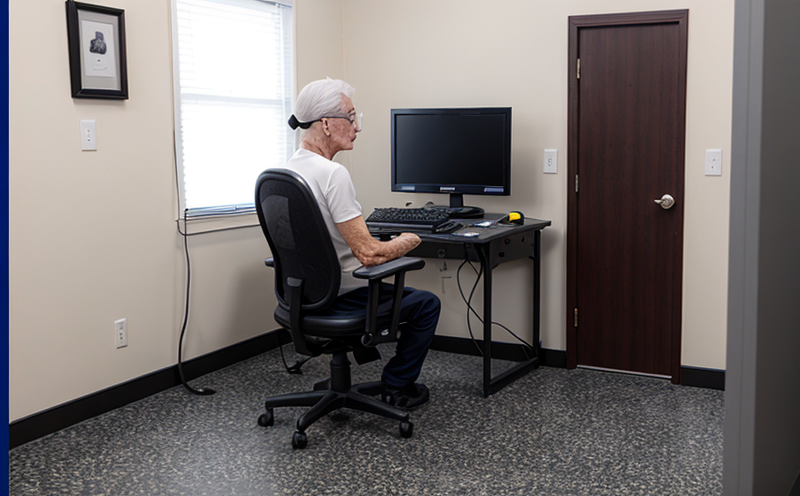AATCC 130 Soil release evaluation of fabrics under wear conditions
The AATCC 130 test method is designed to evaluate the soil-release performance of fabrics in simulated real-world wear conditions. This standard simulates the typical care and wear cycles that a fabric experiences, providing a robust measure of its ability to retain or release soil during these processes. Understanding this metric helps manufacturers ensure their products meet consumer expectations regarding hygiene and aesthetic appeal after multiple washings.
The test involves exposing fabrics to a series of conditions that mimic everyday use scenarios, such as perspiration, oils, and other contaminants. These exposures are followed by washing cycles which simulate the cleaning process. The goal is to measure how well the fabric retains or releases soil during these cycles. This evaluation can be crucial for various industries including fashion, home textiles, and healthcare, where fabric performance under repeated stress conditions directly impacts customer satisfaction.
The AATCC 130 method ensures that fabrics maintain their original properties even after multiple washings. It helps manufacturers develop durable products that meet both aesthetic and functional requirements. By adhering to this standard, companies can enhance the quality of their offerings while also ensuring compliance with industry norms and regulations.
For instance, a fabric that demonstrates excellent soil-release performance under AATCC 130 conditions is likely to be perceived as premium by consumers. Such fabrics are more likely to retain their appearance and hygiene over prolonged use, making them preferred choices among discerning customers. This not only boosts brand reputation but also enhances market competitiveness.
The test procedure involves several steps aimed at replicating the fabric's journey from production to consumer usage. Initially, the fabric is preconditioned according to specified parameters to ensure consistency across samples. Then, it undergoes soil application followed by a series of wash cycles using detergents and water conditions that mimic actual washing practices. Post-wash evaluation involves assessing the amount of retained vs released soil.
Understanding these real-world implications underscores why AATCC 130 is essential for quality assurance teams in various sectors. Compliance with this standard ensures that products meet high standards, enhancing customer satisfaction and fostering brand loyalty.
- Preconditioning: Ensures uniformity across samples before testing begins.
- Soil Application: Simulates typical soil conditions fabrics encounter during wear.
By addressing these steps meticulously, laboratories like ours ensure accurate and reliable results that reflect real-world performance. This thorough approach not only aids in product development but also supports regulatory compliance efforts.
Applied Standards
The AATCC 130 test method is officially recognized by the American Association of Textile Chemists & Colorists, a leading authority in textile chemistry and color science. Compliance with this standard ensures that fabrics meet stringent quality benchmarks, thereby enhancing consumer trust.
ISO standards often complement these guidelines to provide additional layers of validation for international markets. For instance, ISO 105-D02 (formerly AATCC TM119) offers complementary insights into color fastness under acidic conditions, which can be integrated with the soil-release evaluation process for a more holistic assessment.
Understanding these standards is crucial because they provide a framework that guides manufacturers in producing high-quality textiles. By adhering to such internationally recognized protocols, businesses ensure their products are consistent and reliable across different geographical regions.
Scope and Methodology
The scope of AATCC 130 covers the evaluation of soil-release properties on fabrics under typical wear conditions. This includes assessing how well a fabric retains or releases soil during simulated washing cycles, which closely mimic real-life scenarios.
During testing, specimens are preconditioned to standardize their initial state before exposure to various contaminants such as sweat and oil. After applying these soils, the fabrics undergo prescribed wash cycles using specific detergents and water temperatures. Post-wash analysis involves quantifying the amount of soil retained or released by the fabric.
This methodology provides a comprehensive understanding of a fabric's performance under realistic conditions, offering valuable insights into its durability and usability over time.
Competitive Advantage and Market Impact
- Innovation Leadership: By staying ahead in test methodologies like AATCC 130, businesses can introduce innovative products that meet evolving customer demands more effectively.
- Enhanced Reputation: Achieving compliance with recognized standards enhances brand reputation and consumer trust. This is particularly important in the textile industry where aesthetics and functionality are paramount.
In today's competitive market, maintaining high-quality standards is critical for success. Compliance with AATCC 130 not only ensures product quality but also sets a benchmark for innovation and reliability. Such adherence can significantly enhance brand image and customer satisfaction, ultimately driving market success.
Moreover, by incorporating these tests into their development processes, manufacturers can identify potential issues early on, leading to more efficient product launches and reduced time-to-market. This strategic approach ensures that products not only meet but exceed expectations, thereby gaining a competitive edge in the marketplace.





